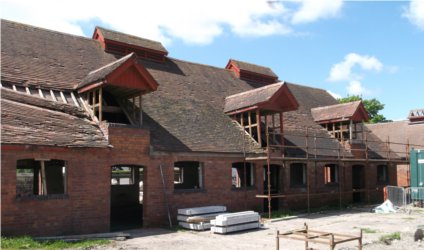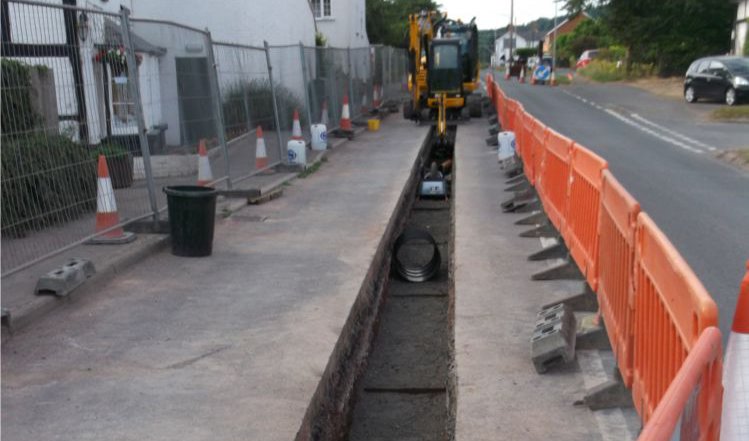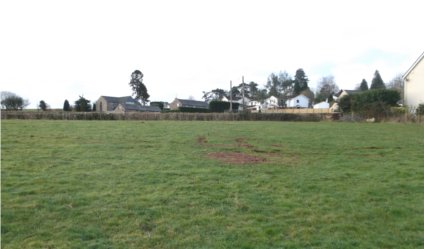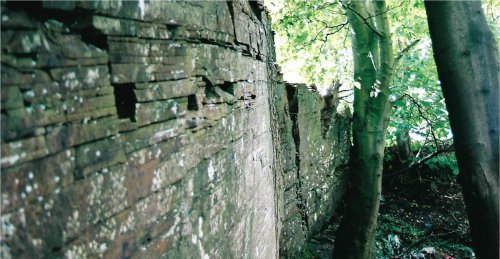Drainage
Design for
Development Sites
The development of some sites requires the solving of complex, typically surface water, drainage problems. Whilst we can't necessarily promise to solve all these difficulties, we have the necessary knowledge, experience and software to design a wide range of SUDS features as well as the more conventional piped drainage systems.
Please Contact Us for further details.
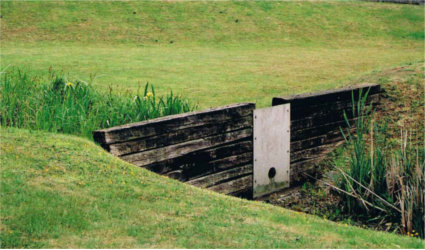
SUDS Design
We have the necessary experience and software to design the full range of Sustainable Drainage System (SUDS) features for new developments. SUDS includes such features as soakaways, rainwater harvesting systems, pervious pavements and attenuation ponds.
SUDS techniques aim to mimic the natural drainage of a catchment by reducing and slowing down the surface water run-off from a site. Many of the features used treat the problem of surface water run-off at source, so reducing costs of pipework, manholes and other ancillaries.
In Wales Schedule 3 of the Flood and Water Management Act, 2010 is now in force so all new developments have to incorporate SUDS and the design has to be approved by the SUDS approving body (SAB).
In England the application of SUDS to development sites of 10 or more houses and similar sized commercial or...
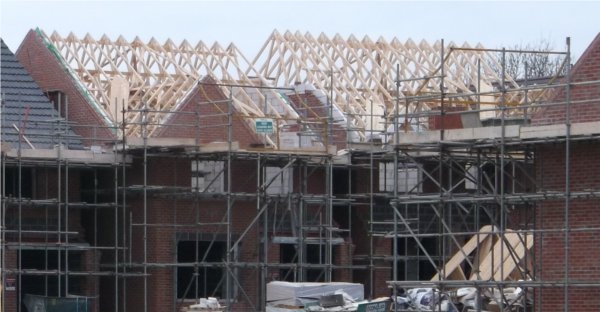
Drainage Strategy Reports
A Drainage Strategy Report involves an investigation of the options for the foul and surface water drainage arrangements for a site and presents the most cost effective solution in each case. A Drainage Strategy Report is therefore likely to be an important element in gaining planning permission or in allowing the discharge of planning conditions relating to drainage matters.
For a site larger than one hectare in England, the part of a drainage strategy report covering surface water drainage duplicates some of the contents of a Flood Risk Assessment, so there may be advantages in combining the two reports.
A drainage strategy report would be tailored to meet the needs of the Client with regards to a particular development site.
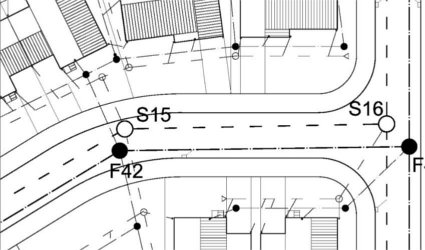
Design of Sewers for Adoption
Morton-Roberts can undertake the design of both foul and surface water sewers for adoption by the water company under a section 104 agreement.
The design for a site in England would be carried out to the requirements of the 'Sewer Sector Guidance' document. On the other hand for a site in Wales, the Welsh national standards for foul sewers would be applicable together with 'Sewers for Adoption' for any surface water sewers.
The hydraulic design of surface water drainage systems would be carried out using Micro Drainage System 1 and Simulation software.
Construction drawings would be produced using AutoCAD software.
Design of Drainage for Building Regulations
Drainage not for adoption would generally need to comply with the requirements of 'Approved Document H' or other applicable documents.
The Building Regulations require that surface water should be disposed of, in order of preference, by infiltration into...
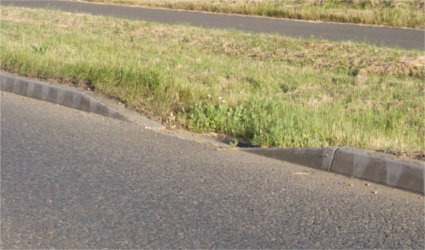
Highway Drainage Design
We can undertake the design of the drainage for new highways subject to adoption under Section 38 agreements together with the drainage associated with section 278 agreements.
The work would be carried out in accordance with the DMRB or the requirements of the relevant highway authority.
Morton-Roberts also has the capacity to investigate the hydraulic performance of existing highway drainage systems using Micro Drainage simulation software.
Flood Risk Assessments
A Flood Risk Assessment (for use in England) is mandatory for all development sites in flood zones 2 and 3 and for all sites greater than one hectare in area. It is often advantageous to combine an FRA with a Drainage Strategy Report.
The scope of an FRA is defined within the government's Planning Practice Guidance web site.
Flood Consequence Assessments
A Flood Consequence Assessment (for use in Wales) is required for all development sites in zones C1 and C2 as defined on the Development Advice Map and in all other zones where flood risk is a potential problem.

